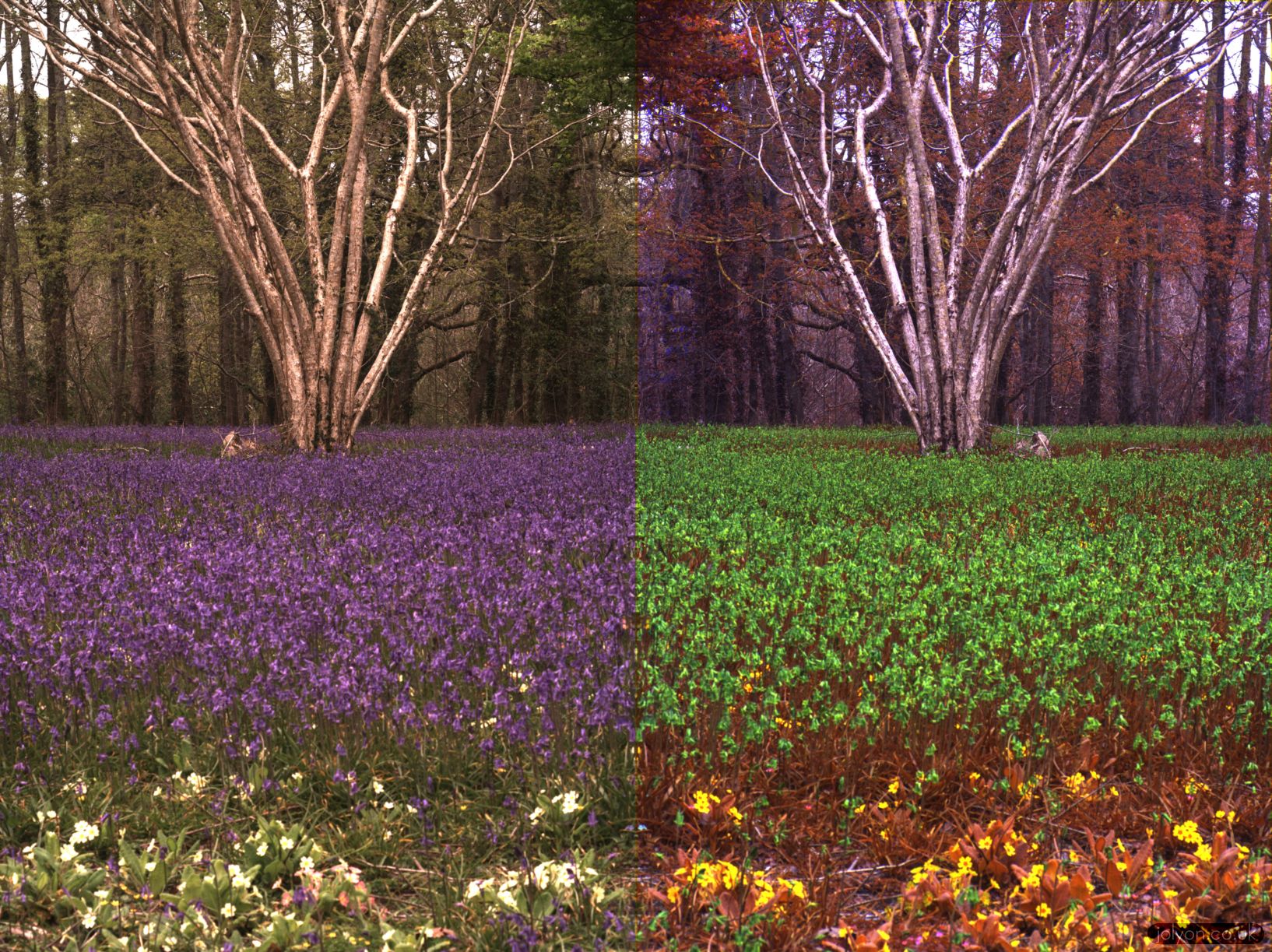This spring we went to Enys gardens, which has an impressive bluebell display, and I took a snap with my full-spectrum camera to see what the carpet of colour looks like to the bees:

The bluebells are powerfully UV-absorbing, only targetting the bee’s shortwave cones. This results in the powerful green false colour in the image above. The primroses in the foreground are also UV-absorbing, but reflect in the bees shortwave and mediumwave range, so look yellow above.
The bark of the large coppiced hazel tree is highly UV reflective, and shows how some lichen species reflect UV while others absorb it.





I am currently looking into the world of moth vision and among the scientific papers I have looked it says that moths see UV, polarized, yellow, green and blue light and in the night they see mostly white and blue flowers. Do you by any chance know if they would see white flowers then also yellow in the night?
There’s quite a bit of variation between moths. Hawkmoths (both diurnal humminbird hawkmoth and nocturnal elephant hawkmoth) have UV, blue and green receptors. Both will be able to see the “colour” of white (typically UV absorbing), blue, yellow and UV flowers (but not red unless there’s also some additional contrast in the other channels). This makes sense given the general colours of moth-pollinated flowers. Less is known about other moths though ( a very evolutionarily diverse group). A couple of nocturnal noctuids do seem to have at least two receptor types (blue and green). The role of polarisation in moths isn’t as well studied as butterflies though I think.